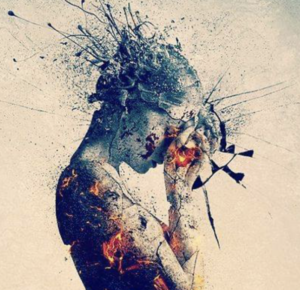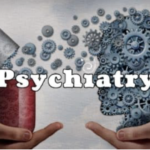Welcome. I wrote this as a follow up to my great conversation with Lucas Aoun about trauma. We talked about the high performing individuals who have trauma in their early lives, and how this trauma can often become fuel for exceptional dedication and passion. So here is a deeper look into trauma in three parts:
- A Conspiracy of Expediency and Profit - a brief history of how the medical establishment has turned its back on interpersonal trauma and its sufferers.
- What is Trauma - a New Definition, where I share my thoughts on what trauma really is, and the complex way it imprints on our lives.
- Recognizing Trauma and Converting it to Energy - Finding the “Why”, recognizing when it’s happening, and how the pain of trauma is converted into energy.
Please send your comments or questions to me at this link . I look forward to hearing from you.
Part 1: A Conspiracy of Expediency and Profit: The disappearance of Trauma from our healthcare system
To really understand the topic of trauma, let’s start from the viewpoint of the established medical community. Today, it only recognizes PTSD (post-traumatic stress disorder), as a specific life-threatening event that debilitates the victim. How did trauma come to be understood from this narrow lens? Let’s look.
The first systematic approach to diagnosing psychiatric problems was the American Psychiatric Association’s DSM (Diagnostic and Statistical Manual of Mental Disorders), “the Bible” of psychiatry published in 1952. Initially it was acknowledged that this would be imprecise and shouldn’t be used for forensic or insurance purposes. Flash forward to 1992 with the updated DSM-4, which changed our understanding of trauma with a simple and complete exclusion of victims of interpersonal trauma. The current version, DSM-5 published in 2013 is no better, even though it is now well known that there are clear and massive differences between, for example, adults who have suffered violent events or natural disasters, and children who have suffered ongoing abuse and neglect at the hands of their caretakers or others.
Lacking an official diagnostic code, the trauma victim is given other diagnoses like depression, anxiety or ADHD. They distort the diagnosis to fit the system, and in doing so, bury a rampant and pervasive condition and delay or neglect its treatment. In a sense, psychiatry is repeating the very trauma so many children and adults have suffered, by denying a deep understanding of Trauma and its impact on development.
Much of the research to create the DSM was done in conjunction with the American Psychiatric Association and funded by big Pharma. They were intent on finding clear-cut diagnoses that Pharma could match to their specific prescription drug formulations. The APA, Pharma and health insurance businesses all had a vested interest in building a structure to suit the best interests of the mental health industry but not necessarily, the patient. Expediency and profit became the guiding principles of the industry.
With the publication of the updated DSM-5, psychiatry made a major regression by ignoring underlying causes of mental health and mental illness. It recognizes no relationship between diagnosis and cure. It attributes neurotransmitter imbalances and genetic programming as the sole causes of mental problems. It ignores abandonment, neglect, physical and sexual abuse, or the witnessing of these, as causes or contributors to mental strife and behavioral problems. Big Pharma was quite happy with this outcome, as were forensic attorneys and psychiatrists. The American Psychiatric Association has made well over $100 million in publishing this book.
Part 2: What Is Trauma - A New Definition
Not everything is trauma. A bad experience is not trauma. Bad parenting is not trauma. So, what is trauma? Having worked with countless children and adults who have been traumatized, I have developed a definition for trauma based on clinical experience. When an experience is overwhelming for an infant, toddler, child or adult, making it impossible to maintain a state of homeostasis, that is the first sign that trauma might be occurring. When the ‘overwhelmed-ness’ is multidimensional, that is the key.
- Emotionally- sending you into flight, fight, freeze or stunned mode.
- Physiologically- reactivity with cortisol or adrenalin release or hormone changes, and the body going into a form of shock.
- Neurologically- when there is imprinting, a more permanent wiring of that event.
When these things occur, it is painful. But what makes it trauma is the “proof of imprint” - the manifestation of which is the present-day possibility for these reactions to recur as if it were happening at the present moment, but without conscious awareness of the genesis of the reaction. It is the reoccurrence of the original multidimensional response when triggered by a sight, sound, smell, place or other trigger.
As we know now, traumatized children and adults develop pervasive hormonal, immune, and physical ailments. Pervasive emotional dysregulation becomes prominent. A child’s developing brain is highly neuroplastic, with dendrites and axons looking to form connections with each other just as desperately as children seek attachment to adults. If the attachments to their adults are disrupted, the neurons that are developing become wired in that particular pattern, according to those particular and specific moments. This leads to a tremendous sense of disturbed identity, self-esteem, and helplessness.
Add to this the fact that children are egocentric. They tend to absorb the events in the world around them and treat them as their fault. Social support, or a parent or guardian who is able to explain the trauma and create safety with a reassurance that it is the perpetrators problem and not theirs, is essential to prevent these brain circuits from becoming wired or programmed into shame, guilt and helplessness. Without this supportive guidance, the child or adult who has been traumatized grows up with a very different kind of brain, mind and body than one who has grown up in safety, protection, nurturance, and understanding.
Whenever something terrible happens to a child, their egocentric undeveloped mind will take blame for the events and carry with them shame that the abuse or violence is their fault. Carrying shame and responsibility from childhood becomes integrated into an “I’m Bad” belief, and their entire life then become organized around the shame or belief. (For more on this I recommend reading Sandor Ferenczi, a Hungarian Psychoanalyst and associate of Freud in the early 1900’s. His theory “The Confusion of Tongues” was a solid early work about childhood trauma.)
More than a violent single act, most trauma is interpersonal and environmental, where a lack of understanding and support of the child’s needs, lack of explaining the world, and nobody to partner with them to navigate the world. It takes an entire family to create a trauma inducing environment. Beatings, for example, don’t happen as a “one off” or isolated incident. When individual parents don’t step in to prevent it, it endorses the behavior and imprints itself onto the child. If, however, a parent or authority figure does step in on behalf of the child, then they learn they are protected, this is not your fault, and the world is not bent against them. In this way, protection, security, and safety can be reestablished. With this important intervention, the child does not internalize it as shame and blame. (Another great resource on this topic is the book “Soul Murder” by psychoanalyst Dr. Leonard Shengold). This requires more than just managing the moment - it means managing the environment, residue, remnants, and relationships around the events. When this is NOT done - the completion of the trauma occurs.
This inability to cope results in the internalizing - an ‘owning’ - of both the role of victim and often also the role of perpetrator. Life becomes either a repetition of this, or a maladaptive and defensive response to it in order to block it out. Life becomes lived in a defensive posture.
If we envision trauma to be discoverable and treatable then we have hope for identifying trauma within ourselves and within our patients. This hope brings the possibility of understanding our lives. Ultimately this results in treatment possibilities, many of which are now new, exciting, and groundbreaking. It’s time to throw the book away and look deeply at each and every individual human from the outside in and the inside out.
Part 3: Recognizing Trauma & Converting Pain into Energy: How the pain of trauma is often the fuel for performance
Let’s talk about the diagnostic experience, and then what trauma feels like inside the individual. For a medical professional today to recognize trauma, they’ll work through a list of symptoms and systematically rule out other diagnoses until they come to an assessment of whether a life-threatening event has occurred that can be labeled as PTSD. This labels and stigmatizes the patient, with a declaration that you either fit it or you don’t based on APA - DSM standards. Again, interpersonal trauma is not considered a true diagnosis, so some other secondary symptom may be diagnosed, usually including depression or anxiety. Once diagnosed, an algorithm of prescribed treatments commences, usually medications, cognitive behavioral therapy (CBT) and/or group therapy. For most patients, this approach is deeply flawed.
None of this seeks to find the “Why”. In my view, treatment starts with the patient and builds from there. It is necessary to understand what it’s like to be inside the patient’s head. My patients describe trauma as an overwhelming feeling of helplessness, “too muchness”, and almost always accompanied by “aloneness”. I rarely see a trauma patient who has had someone with them who was able to explain what was happening and provide a feeling of safety or security. This alone can keep the ‘too muchness’ at bay.
As we seek to understand the “Why”, we start by understanding what it feels like to be in the throes of trauma. Here are some of the cues my patients express. See if any of this feels familiar to you in your own life.
- You may be unaware or not recognize when you are in the midst of a traumatic reaction.Your reactions may feel logical and rational to you but are at odds with what is “normal”. This is called ‘cognitive bias’, when your rational brain steps in to attach meaning to feelings and make sense of irrational thoughts and feelings.
- You become self-absorbed and isolate yourself in the face of a health event or other, pushing others away at a time when you’d need them to be close. This may be a re-enactment of the experience of being alone and unprotected during the earlier abuse.
- When you are triggered, you start to become aware of something going on, but it feels like you aren’t yourself. You may feel like you’re in a different place in your mind, see others as dangerous or threatening, or feel like the world is different. Some people express it as “the channel just switches - suddenly I’m in a different movie”.
When you’re in it - it feels real. And so, you react to as if you were truly in danger. “I have to defend myself”, “I’m alone in this”, feeling like you did during the trauma including feeling helpless, overwhelmed, isolated, or depressed.
This repeated traumatic regressions often lead to ‘acting out’ in ways we don’t normally behave:
- Escape - drinking, drugs, physically removing yourself
- Enactment - because we feel it’s real, we start acting on our feelings, looking to assign blame or rationales for our feelings.“It must be YOU doing this to me”, for example, putting the blame on our spouse or partner for shaming us, blaming us, attacking us, turning on us in some way. We search for a cause for our discomfort.
- Cognitive bias - when the rational brain tries to attach meaning to feelings to make sense of it.We try to gain rational control over what we’re feeling by constructing a cause or story.
- Narcissism- we isolate or go into ‘lone wolf’ mode, because I can only trust myself, and need to keep others at bay
- Neuroticism- We may go into messianic pursuit of a goal or achievement, which is a fantastic adaptation to pain. The pain contains a powerful amount of energy. If we convert the energy to achievement or drive toward mastery, everything else drops by the wayside and the only thing we live for is our goal.
This last adaptation, neuroticism, can be a positive outgrowth of trauma in that it results in the accumulation of skills, and the rewards one gets from these skills. Think about athletes who recount intense practice and ‘playing through pain’. They are willing - indeed anxious - to work far beyond what other players can even attempt. In this way, what starts as a response to pain can also become joy in the success and accomplishment it fuels. With this mastery comes the opportunity for transformative and healing experiences. The outcome of the work - becoming an amazing parent, surgeon, athlete, or other - can provide such a powerful sense of pride, achievement, or self-esteem that balances out the pain that once fueled the drive for excellence. In essence, you stop being fueled by the pain, and are transformed by a love of the moment.
Another powerful adaptation is the determination to survive and conquer - which again can result in high achievement and uncommon performance. An abused child may take agency over the pain with a steadfast mantra - e.g. “You’re not going to break me”. Through this, survival becomes conquest. This skill is transferred onto other quests. If we’ve survived pain from others, we can certainly survive it from our own demands. This is a transformation from identifying with our own victim emotions - weakness, hurt, shame - and instead tapping into the abuser energy - the torturer, the unyielding brute - but now, we are ones demanding performance from ourselves, and no longer a victim of the other. We take control over pain by becoming the instigator. We tap into their anger and use it to push us forward and prove we can take it and more.
This conversion of pain into energy is absolutely possible, and in fact, necessary if we are to sustain a productive and positive life. We can become fueled by joy and not by pain. There is real fear in this for the athlete or high achiever who comes to believe their success is permanently entwined with their pain. They fear “going soft”, giving into the shame, or putting down their sword for even a moment. We have myriad examples of success in this transformation away from pain as fuel - many Hall of Fame athletes and entrepreneurs. We also have myriad examples high profile flame outs, when the trauma sufferer did not do the work to move away from pain as the source of energy. By working through the trauma, understanding the “Why”, and adopting skills to manage the physical and emotional disruptions that trauma brings, we can transform without diluting the high energy needed for our performance.
---
I’m working on a program called “Converting Pain Into Energy” that I’d love to share with you in coming weeks. I’ll email it out when it’s available, and hope you’ll continue your exploration of trauma with me. If you haven’t yet joined my email list, CLICK HERE or sign up at www.themileticcenter.com/contact-us




